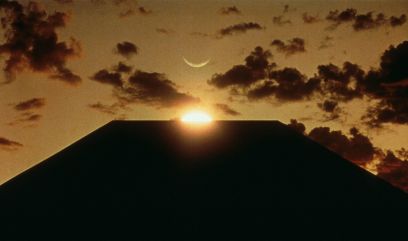My Time will Come
Matteo Emanuele Vacca made this project in the context of the course «Forecasting» and the Y-Institute's annual theme «Future».

The starting point of this research was a sentence I encountered during my reading of «The Rest is Noise: Listening to the Twentieth Century» by Alex Ross. I discovered that it had been extracted from a letter Gustav Mahler sent to his future wife, Alma Schindler, in 1902. Translated, it sounds like «my time will come». To provide a brief context, Mahler was reflecting on the troubled relationship and eventual alignment between art and time, particularly in terms of success or, at the very least, acceptance. He paid special attention to the possible correlation between quality and popularity.
Mahler struggled to be accepted as a composer, unlike his friend Richard Strauss, who was much more popular at the time. Despite the depth of Strauss' music, Mahler's seemingly prophetic sentence has proven true for him in contemporary times: his compositions are consistently played and recorded worldwide.
Even if it is not the most discussed topic within the artistic world, because it compels people who create art to confront the actual reception and, to an extent, the value of their works – a much more uncomfortable terrain than the abstract elitist superstructure they often create and remain in, where everything works perfectly and makes total sense – it is under our eyes that some artworks seem to possess such a timeless nature that they are perceived almost as immortal and even necessary. On the contrary, some others only belong to the specific time they have been created in and to its trends, eventually fading from the horizon.
Time and space sadly often act as hostile border walls to worldwide sharing and understanding. However, beyond them, some masterpieces have risen to identify us culturally as part of something more significant than just a geographical and/or language community. Even in this fragmented postmodern world, they proudly stand as a loud call for universality.
I approached this as a survey. The first step has been asking to people the following question: «If you had to pick up an artwork you think is representative of that specific field (e.g. architecture, music), which one would you save as a must-have for a hypothetical future civilization?». The variety of answers I received has been amazing and really gives us a taste of how much diversity is essential for our common growth. Here below they’re listed:
- J. Cage, Water Walk: Because anything can be music, as long as you believe in it.
- Pink Floyd, The Wall: How personal development is interconnected with societal development.
- J. Coltrane, Giant Steps: The importance of experimentation and research for novelty.
- B. Marley, Three Little Birds: How art can bring joy and hope.
- G. Mahler, Symphony No. 7: The importance of diversity.
- O. Eliasson, The weather Project: For its collaborative dimension and the focus on nature.
- M. Duchamp, The Pissoir: Because it changed the way we perceive art.
- A. Obregón, Violencia: It represents the violence in Colombia, but it also more universally speaks about major problems of our society, like abuse and money.
The «issue» all these answers raised is to what extent we give importance to things because they have been made available for us by the political/social/cultural system we live in and how much freedom we had in this choice. Easy examples to address this topic are some queue-attractor artworks that museums treat as special gems, like Monna Lisa in Paris, despite the Louvre having an insane number of legendary masterpieces; in this case, the actual quality of the artwork might be less relevant.
If we think about L’ultima cena in Milan, the result of the technique Leonardo used was disastrous, and it probably prevents us from a complete appreciation of the mural painting. However, the connection with Western culture is so powerful and meaningful, and together with the Monna Lisa, its history is so rich and its emotional connectedness so effective that millions of people feel like they have to experience it.
That’s why I decided to add a second question: «What just makes you cry or rejoice, which artwork would you experience almost every day?». Since I asked this second question in a different phase of the project, I didn’t collect answers like with the previous one, but my goal was mainly to track how much difference there could be between the two answers. I happened to think that people were putting on a kind of mask to answer the first question, but we have to acknowledge that it’s extremely hard to disconnect from our surroundings and disable the strong influence society has on us, and the risk is to end up in sterile guessing.
What I asked them to do afterward was to listen to a short piece of music I selected, more specifically, the very ending of the film version of the rock opera Jesus Christ Superstar: link to the video, and to apply to it the same questions, just reversed. Also, here the variety of answers I got is astonishing, and in the end, the rich picture of our society I obtained might actually be one of the best outcomes of this research.